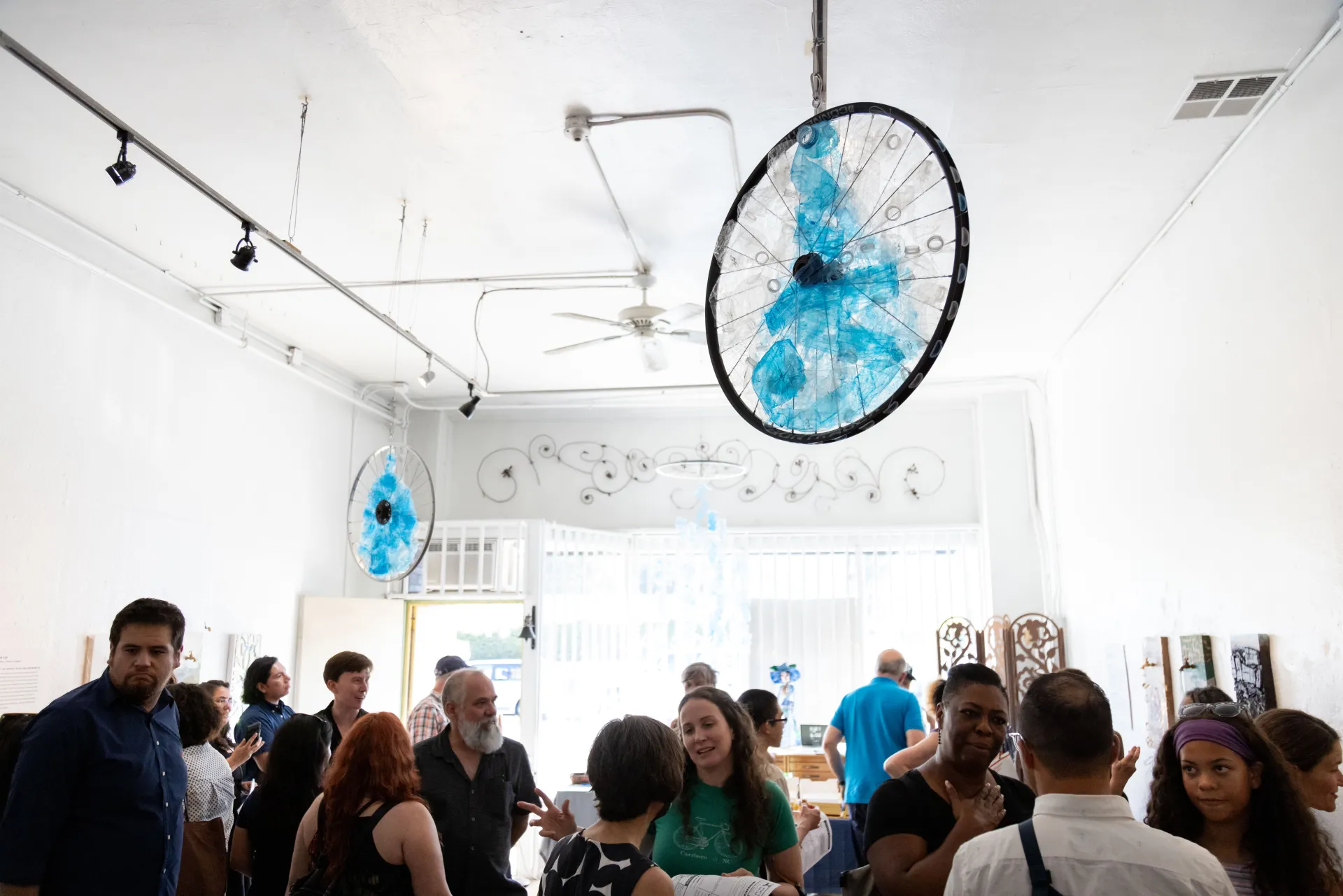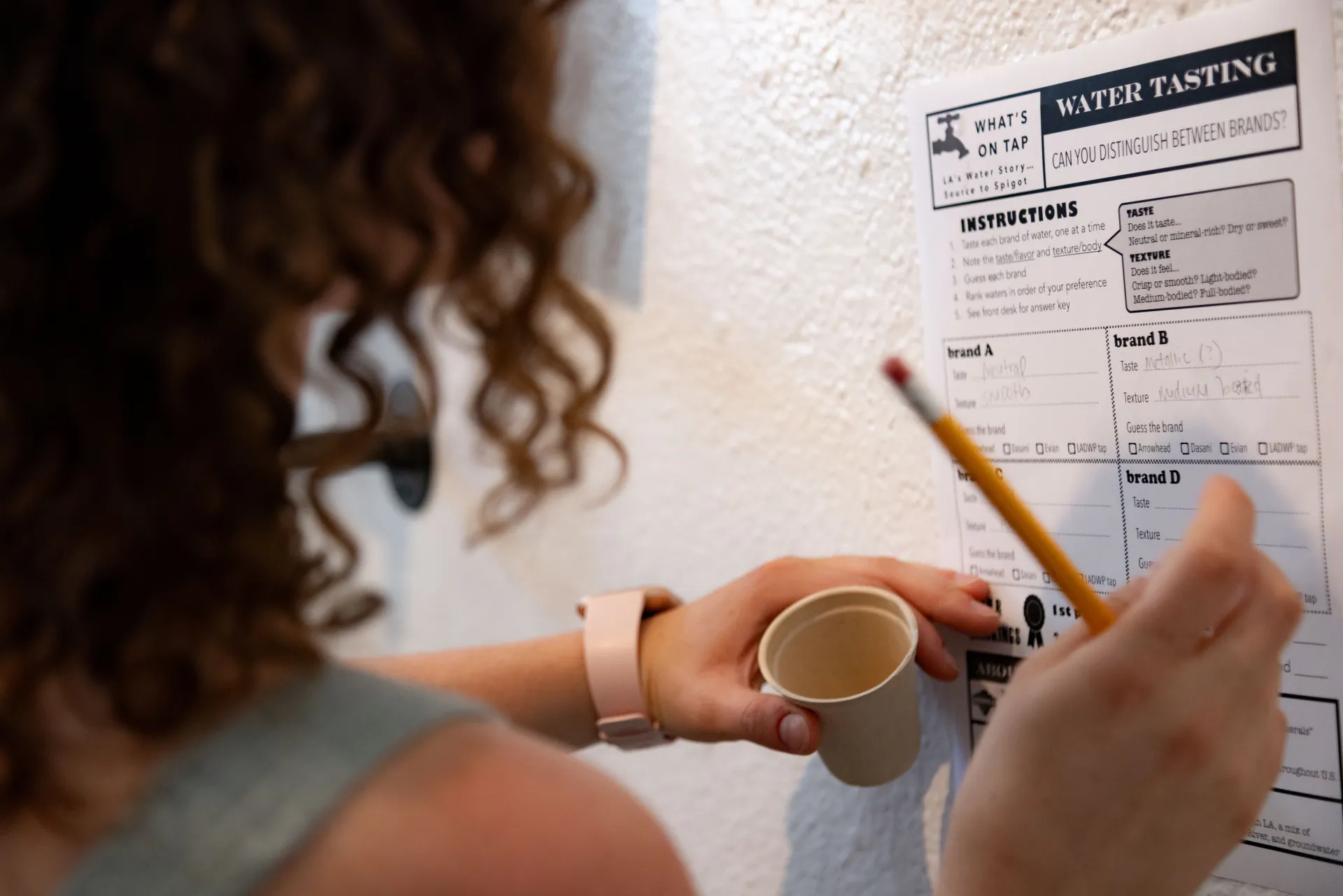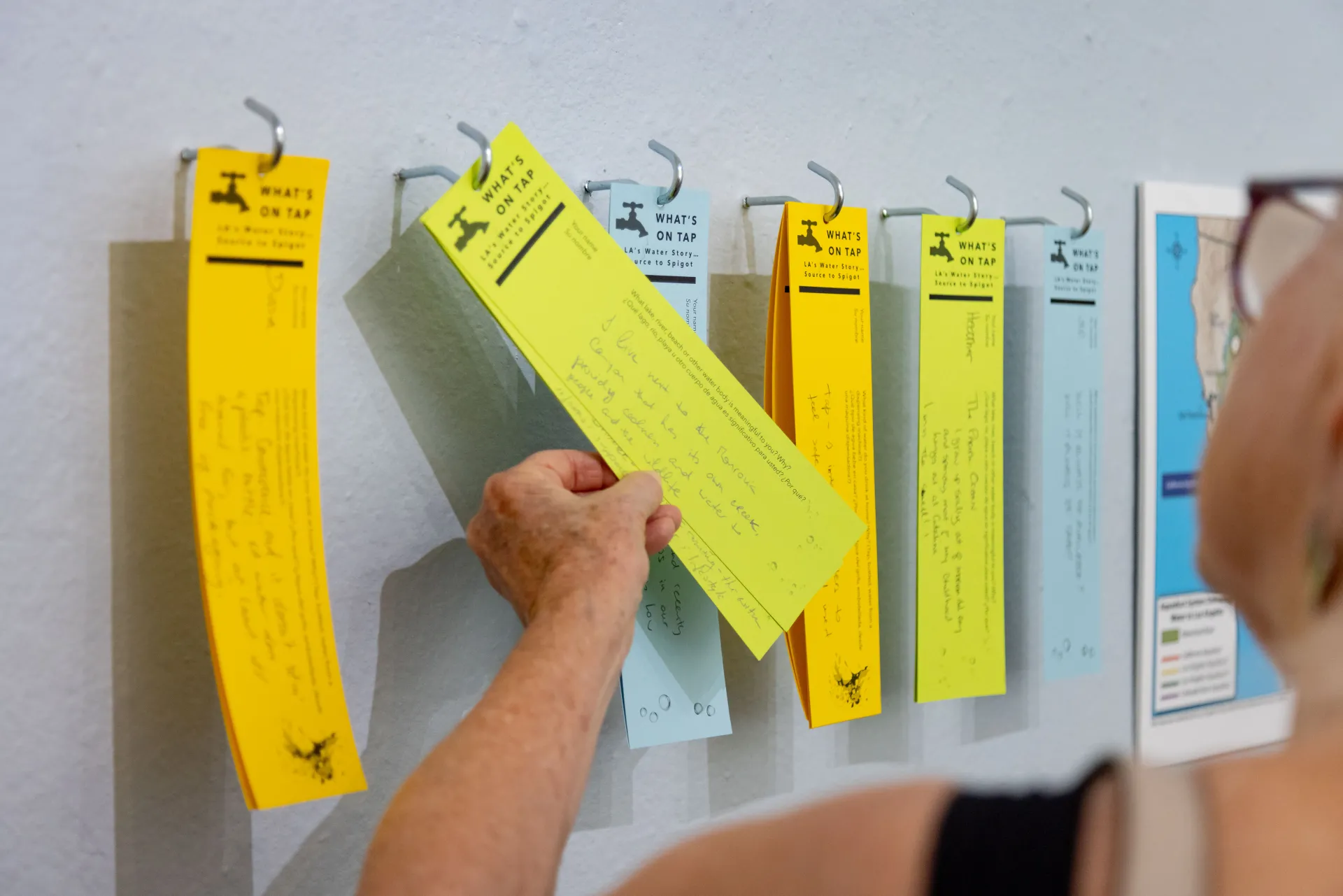
Attendees mingling at the exhibit opening reception at Avenue 50 Studio in Los Angeles. (Photo Credit: Shanley Kellis)
Engaging audiences at the nexus of art and science can produce results that are more profound and surprising than expected. As both an artist and a scientist I’ve had several opportunities in recent years to work with local arts organizations on environment-themed art shows in Los Angeles — tackling topics such as climate change, shade equity, and water. These opportunities were a chance to engage audiences in both the problem and solutions sides of topics that can often feel abstract, overwhelming, and intractable.
The more I got into it, the more I felt that this type of engagement is a great way to engage audiences in an era where the sheer volume of information is drowning us in a sea of content and confusion. In an age of information overload, events and exhibitions that merge art and science can cut through the noise. Science provides the evidence, art delivers the emotional punch, and audiences close the loop — they walk away with new insights, shifted perspectives, or sometimes even a spark to act. At the intersection of art and science, we see Aristotle’s artistic proofs in action: logos (science) and pathos (art) come together to point to ethos (the viewer or participant’s interpretation).
What’s On Tap: L.A.’s Water Story…Source to Spigot
That spirit was at the heart of What’s On Tap: L.A.’s Water Story…Source to Spigot, a science-based traveling art exhibit that explored pressing water issues in the Los Angeles region. In summer and fall of 2024, we assembled a partnership between the University of California Agriculture and Natural Resources and the UCLA Luskin Center for Innovation to present this exhibit, with the California Institute for Water Resources as a sponsor and supporter.
The exhibit explored five distinct themes: local water and groundwater; imported water; human right to water; tap water (dis)trust; and affordability. I co-curated it alongside my husband, Jolly de Guzman — with me overseeing the “science” half and he the “art” half.
The show was on view for nine weeks at three venues in the summer and fall of 2024. The first venue was Avenue 50 Studio, a nonprofit arts presentation organization rooted in Latino and Chicano culture located in L.A.’s Highland Park neighborhood. The exhibit was on view in July and August 2024. The second stop was at the historic birthplace of Los Angeles, the City of Los Angeles El Pueblo Historical Monument, where the exhibit was on view at El Tranquilo Gallery through September 2024. Finally, the exhibit traveled to the Water (R)evolution Symposium organized by the Council for Watershed Health in the City of Carson, California, in October 2024.
Audience Engagement: Blind water tasting and exploring our relationship with water
Audiences participated in activities including a blind water tasting, where over 340 participants ranked and attempted to identify various water sources — Arrowhead, Dasani, Evian, and Los Angeles Department of Water and Power (LADWP) tap water — based on taste and texture. The overall identification accuracy was approximately 32%, indicating that participants struggled to correctly identify the brands. Dasani was most frequently identified correctly. Participants often confused LADWP tap water with Arrowhead and Evian, suggesting similar perceptions of taste between water sourced from the public system and private sources. Common taste descriptors like “neutral” and “mineral” were used across all brands. LADWP tap water had taste descriptions similar to Dasani, indicating comparable sensory perceptions. Participants had difficulty distinguishing between brands based on taste and texture alone, suggesting that sensory differences may be subtle and perception and branding significantly influence preferences more than taste. Tap water was not easily distinguishable, underscoring the potential for it to be perceived as a high-quality option relative to some participants’ perceptions of bottled water as superior.

A visitor filling out a form at the exhibit’s blind water tasting station. (Photo Credit: Shanley Kellis)
In addition to sensory experiments, the exhibit included open-ended prompts eliciting participants’ water concerns, consumption habits, and emotional connections to natural water bodies. Participants expressed fear, negativity, and trust/distrust regarding water quality and water security in a changing climate, indicating that water-related issues can evoke emotional responses driven by uncertainty and quality concerns. Responses related to consumption habits and motivations revealed a diversity of water sources and the reasons for choosing them — ranging from safety and taste to environmental responsibility — underscoring the complexity of water-related decisions in daily life. Visitors also reflected about water bodies of significance to them, conveying positive associations with water, its cultural significance, and related emotional attachment.

A visitor reading written responses to several prompts related to audience members’ perceptions and experiences with water. (Photo Credit: Shanley Kellis)
Opening and closing receptions included moderated panel discussions that brought together experts and community voices to delve deeper into themes of water equity, local water, infrastructure, and public trust.
By combining artistic expression, scientific engagement, and community dialogue, What’s On Tap demonstrated an adaptable model for environmental communication and extension centered on making water issues visible, personal, and actionable.
What’s On Tap illustrated that when art and science work in tandem, the conversation about water can shift — making it not only a matter of fact but also a matter of heart.
Programming was supported by Accelerate Resilience Los Angeles and the California Institute for Water Resources, in partnership with Avenue 50 Studio and the City of Los Angeles El Pueblo Historical Monument.
Read more about the exhibit, including analyses of the interactive engagement components, in the report Engaging the Public on Water Issues Through Art.
Edith de Guzman is a Cooperative Extension Specialist in Water Equity and Adaptation Policy in the UCLA Luskin Center for Innovation
